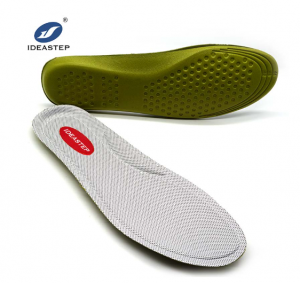
Antibacterial insoles are designed to provide a hygienic and odor-free environment inside shoes by incorporating materials that have antimicrobial properties. The most commonly used material for this purpose is silver nanoparticles.
Silver nanoparticles are extremely tiny particles of silver, typically less than 100 nanometers in size. These nanoparticles possess unique properties due to their small size, including enhanced antimicrobial activity. When incorporated into the insole material, the silver nanoparticles release silver ions, which have antimicrobial effects.
The mechanism of action involves the silver ions coming into contact with bacteria or fungi present in the shoe environment. The silver ions can disrupt the cell membranes and inhibit various metabolic processes within the microorganisms, ultimately leading to their death. This helps to prevent the growth and proliferation of bacteria and fungi, reducing unpleasant odors and maintaining a cleaner and more hygienic environment for the feet.
Antibacterial insoles with silver nanoparticles are commonly used in footwear, particularly in situations where foot odor, fungal infections, or general foot hygiene are concerns. They can be beneficial for individuals who experience excessive sweating, wear closed shoes for extended periods, or participate in physical activities that may lead to microbial growth.
It’s important to note that while antibacterial insoles can help control odor and reduce bacterial/fungal growth, they are not a cure for foot-related problems. Proper foot hygiene, regular cleaning of footwear, and seeking appropriate medical advice when necessary remain essential for maintaining foot health.
Related product links: https://www.aideastep.com/product/pu-antibacterial-insole/
